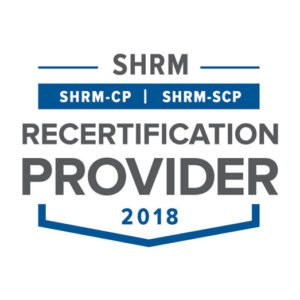Relevance is one of the most over-used, yet elusive, buzzwords in today’s hypercompetitive workplace. I don’t think anyone struggles with its definition. Relevance is having importance to the matter at hand.
I do, however, think EVERYONE struggles with how to achieve it.
Relevance is often a tenuous goal especially when it comes to cross-functional teams with their natural diversity of personalities, levels of experience, areas of focus, skill sets and more. Magnify this melting point of talent with the inclusion of virtual teams who may also add the challenge of double-digit time zone differences. These differences can organically create gaps in collaboration, communication and even the most fundamental understanding of the team’s objective(s).
How do you unify these differences into a smooth-sailing, high-performing and relevant ship that consistently and effectively contributes to the growth of the organization?
After more than 40,000 hours of “in the trenches” working with teams and its leaders, I have a few thoughts on what separates great teams from mediocre ones.
5 Critical Success Factors for Relevant Teams
- Achieve Absolute Clarity on Mission and Vision
The #1 issue with team relevance is lack of alignment on mission and vision. Great teams know where they are heading and how it contributes to the goals of the organization they serve. Essentially, they are laser-focused on the right outcomes with the key word being “right.”
Equally as important, they understand the “why” behind what they do. This affords them clear vision and purpose that converges and energizes teams breeding higher performance, lower stress, higher energy and increases in the “personal value equation.
To create this desired alignment, ask EVERY member of your team the following questions:
- What is the Mission and Vision of our team?
- What is YOUR contribution to the Mission and Vision of our team?
If there are gaps, close them. Otherwise, forward progress is not possible. Ensure each team member is aligned on mission and the specifics of their contribution. If unsuccessful, reevaluate your mission and/or replace team members . . . because you will not achieve the right outcomes.
- Set Clear Priorities with Measurable Performance Metrics
Great teams focus on the SAME priorities. What makes many teams mediocre is the common – yet unrealistic – practice of owning and taking on too much at one time. This dilutes relevance because it impedes progress. Often to conquer multiple priorities, a group will divide with individual contributors working separately on different things. By its very definition, this is not a team effort. It’s activity with little meaningful progress.
Counteract by using the team’s Mission and Vision to set priorities that are properly distributed and realistic. Then solidify achievement with a disciplined plan to complete the identified priorities BEFORE moving on to new goals.
- Foster Strong Team Dynamics, Communication and Support
Relevant teams are SELF-AWARE with high emotional intelligence. Members know and understand their roles and responsibilities and accept and leverage individual and team strengths . . . all for the good of the team. This collective self-awareness creates individual ownership, mutual respect, a sense of value and genuine collaboration of strengths.
In fact, a 2016 Google study, focused on building the perfect team, validated that communication and emotional intelligence are the key factors in successful teams, not subject matter expertise or skill. These soft skills can be elevated through a Team Dynamics session focused on:
- Roles and Responsibilities
- Strengths and Weaknesses
- Communication, Support and Team Needs
- Develop Healthy Relationships with Other Cross-Functional Teams and Stakeholders
Building on the importance of Emotional Intelligence, relevant teams realize they are one cog in a wheel. To create a well-oiled machine, each cog must work together to achieve a higher mission. This concept of team inter-dependency is well-understood but, in most cases, poorly implemented.
For instance, mediocre teams delay involving their cross-functional dependencies until they are ready to reveal their work product with the expectation that the other team(s) will adapt. Instead of a smooth hand-off, this practice “gums up the works” with conflict, resentment and potential roadblocks and/or delay.
Conversely, great teams involve inter-dependent stakeholders/teams/customers BEFORE the work is defined to understand their needs, create dual ownership and open the lines of communication and buy-in.
- Create and Maintain a Healthy Brand Image Throughout the Company
Here’s the crux . . . no one wants to be part of a mediocre team but everyone wants to be part of a great one.
Relevant teams are contagious and well known throughout their company because they actively demonstrate points 1-4! They also purposefully shape their image by asking critical questions, such as:
- How do we want to be perceived within the company?
- What do we believe our current Brand Image is today?
- Where can our Brand Image improve?
The hallmark of relevant teams is realizing perception is reality when it comes to Brand Image. To create, deliver and sustain your team’s brand image, identify your ideal “5 Key Brand Image Characteristics.” Conduct a survey with other teams to see how you are performing against these areas. Close gaps and celebrate where your team is already winning.
Make your team relevant today by embracing these critical success factors.
CHECK OUT THESE UPCOMING EVENTS FROM THE RUBI HO GROUP
Become a SAOL™ Certified Coach & Consultant
2018 Classroom Dates
March 18 – 24, 2018
June 3 – June 9, 2018
Blue Ash, OH
SAOL Executive Coaching for Managers
2018 Classroom Dates
Catered to Your Schedule & Location
ABOUT RUBI HO
Rubi Ho and SAOL™ Coaching and Consulting is ALL about helping Organizations, Teams and Leaders drive and optimize convergence, alignment and performance throughout a company! He and the SAOL Coach and Consultants do this by being experts at resolving issues pertaining to strategy, leadership, performance and overall alignment and helping leaders become their ‘Highest Selves!’


